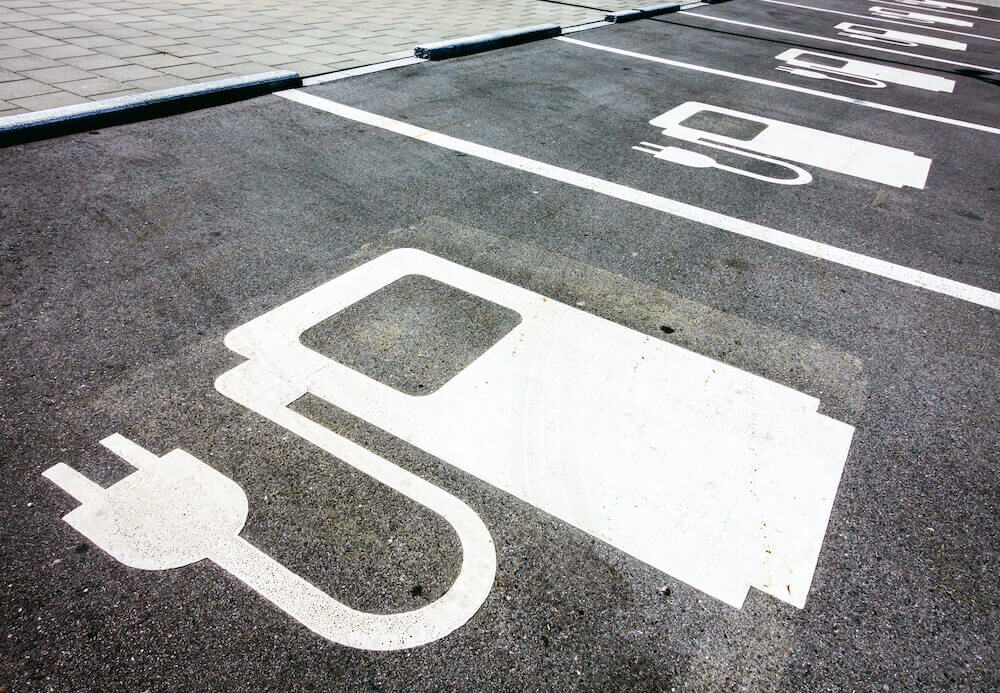Not all EV chargers are the same. If you’ve been looking into how to charge your electric vehicle (EV) at home, work, or on the go, you’ve probably seen terms like “Level 1,” “Level 2,” or “DC Fast Charging.” But what do these levels mean, and which one actually fits your life or business?
Let’s break it down.
The 3 Main Levels of EV Charging
EV chargers come in three categories: Level 1, Level 2, and Level 3. The “level” just refers to how fast they can charge your car.
Level 1: Slow and Basic
- Power Source: 120V outlet (your standard wall socket)
- Speed: About 3–5 miles of range per hour
- Use Case: Plug it in overnight, hope it’s ready by morning
Level 1 chargers usually come with the car. No installation, no setup—just plug it into a basic outlet and let it crawl. They work fine for short commutes or if you drive infrequently. But if you’re on the road a lot, they’re probably too slow.
Level 2: The Sweet Spot
- Power Source: 240V outlet (like an electric dryer)
- Speed: 20–45 miles of range per hour
- Use Case: Homes, workplaces, parking lots, retail spaces
Level 2 chargers are a serious upgrade in speed and convenience. You can fully charge most EVs in 4–8 hours, which makes them ideal for overnight use at home or for topping off during the day while shopping or working.
A good example? The MACH 2 Level 2 EV Charger (48 Amps). It’s built for speed, supports both J1772 and Tesla (with adapter), and works well for both personal and commercial setups.
Most Level 2 chargers need a 240V outlet, but you can have one installed by an electrician if you don’t have one already. And many models are Wi-Fi-enabled or compatible with open charging networks for easy control.
Level 3: Fast, But Not for Everyone
- Power Source: Direct current (DC), requires industrial-grade infrastructure
- Speed: 60–250+ miles of range in 20–30 minutes
- Use Case: Highway rest stops, fleet charging, commercial hubs
Also called DC Fast Chargers, Level 3 stations are lightning fast—but they’re expensive and power-hungry. They typically require three-phase power and commercial-grade electrical service, so they’re not meant for home use.
Think of it like this: Level 3 is the EV version of a gas station. Great for road trips, but not something you can install in your garage or small business parking lot.
For most drivers and businesses, Level 2 hits the sweet spot between cost and convenience.
EV Charger Connectivity: What It Actually Does
Beyond charging speed, you’ll often see talk of charger “connectivity.” This refers to whether the charger can talk to a network, app, or utility company—and what that enables you to do.
Let’s break down the types:
Non-Networked Chargers
Simple. Plug in and charge. No Wi-Fi, no apps. These chargers don’t communicate with anything—they just deliver power. Perfect for low-traffic areas or private use where you don’t need remote access.
Wi-Fi-Enabled Chargers
Wi-Fi lets you connect your charger to an app so you can track usage, schedule charge times, or even manage multiple users. This is helpful if you want to avoid peak utility rates or control who can access the charger.
4G (Cellular) Chargers
These connect via cellular networks, so you don’t need on-site Wi-Fi. Great for public or semi-public installations—like parking garages or commercial buildings—where network access may be limited.
OCPP-Compatible Chargers
Open Charge Point Protocol (OCPP) is a non-proprietary standard that lets chargers work with many different network providers. If you're a business or want flexibility, look for OCPP compatibility. It lets you:
- Choose your network
- Access demand response programs
- Manage load balancing
- Integrate with utility incentives
For example, if you’re operating in a state with incentives through your utility company, OCPP lets you hook your charger into their system for rebates or credits. Check out the Alternative Fuels Data Center to see what incentives are available in your state.
How to Choose the Right Charger
If you're just charging at home and don’t want the bells and whistles, a basic non-networked Level 2 charger will do the trick.
If you're a small business, commercial property owner, or landlord, consider a networked Level 2 charger with OCPP. It gives you more control and opens the door to future-proof options—like user billing, remote access, and utility integration.
A Quick Note on Compatibility
Most EVs in North America use the J1772 connector. Tesla vehicles come with their own plug (NACS), but adapters make them compatible with nearly all Level 2 chargers, including the MACH 2.
Some newer models of chargers support both plug types natively or through interchangeable cables—handy if you want to serve all EV drivers.
Final Thoughts
Choosing the right EV charger type doesn’t have to be complicated. Start with what you need:
- At home? A Level 2 charger like the MACH 2 is fast, reliable, and easy to install.
- For your business? Go Level 2 with network capability for control, revenue, and visibility.
- Want the fastest charge? Look to Level 3—but be ready for major infrastructure and investment.
As EV adoption grows, installing the right charger is one of the smartest moves you can make—for your daily routine, your property value, and your bottom line.
Want to dig deeper? Browse energy.gov’s EV charging basics or explore commercial incentives via the U.S. Department of Transportation.

